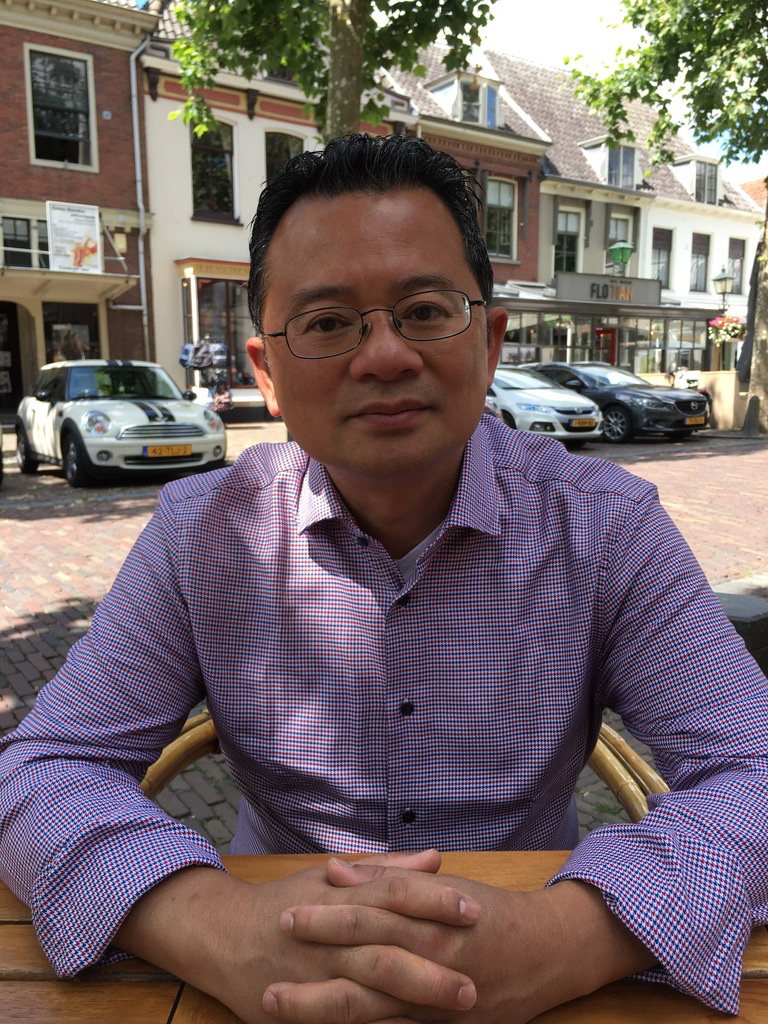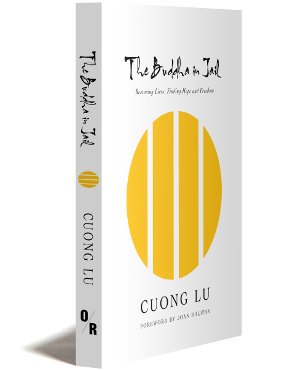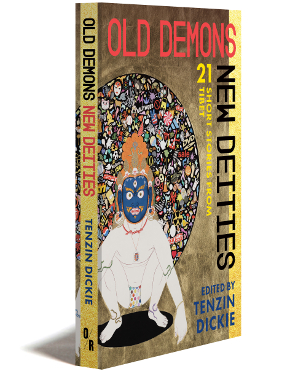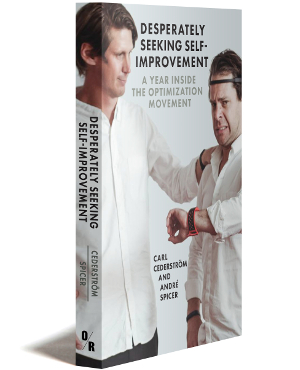The Buddha in Jail
RESTORING LIVES, FINDING HOPE AND FREEDOM
“In The Buddha in Jail, Cuong Lu demonstrates how to be in a helping relationship without getting caught in roles. As a prison chaplain, he did not attach to the idea of being a helper, or even of ‘helping.’ He sat quietly, deeply present with each inmate, and saw each of them as a soul, not just their personality or their troubled past. By dwelling in love with each person, accepting them without judgment, one by one they transformed, and their recidivism was close to zero. I congratulate Cuong Lu for the depth of his prison ministry and this beautiful book.” —Ram Dass, author of Be Here Now and Walking Each Other Home: Conversations on Loving and Dying
“Let us read these stories carefully, a few at a time, and apply them to our encounters with those who have acted badly, those we don’t particularly like, and ourselves, for all these dialogues are taking place within each of us all the time.” —Roshi Joan Halifax
“To free ourselves, we have to unlock the doors from within. Chaplains like Cuong Lu play an essential role in freeing those in prison from their inner demons, offering guidance, support, and loving kindness, teaching stillness and self-reflection, learning to connect with their fierce and loving hearts. I highly recommend The Buddha in Jail, a good read and a great resource for understanding prisoners and for finding the keys to the prisons in our own minds.”
—Spring Washam, author of A Fierce Heart: Finding Strength, Courage, and Wisdom in Any Moment
Buy This Book
|
Paperback: $17/£13
|
E-book: $10/£8
|
Print + E-book: $22/£17
|
About the Book
This is a book of 52 vignettes—stories and teachings about Cuong Lu’s six years as a prison chaplain. Lu shares insights into the prisoner’s mindset, something with implications for us all, whether or not we are in a conventional jail. As a prison chaplain, Cuong discovered that when the men inside allowed themselves to feel their pain—including remorse from committing crimes—knowing and feeling the truth became a source of strength for them. And when the inmates felt listened to, understood, and not judged, it transformed their sense of who they are, and as a result changed their attitudes and their behavior.
This book is not just about the prisoners. It’s about all of us. We’re each caught in distorted and limiting ideas of ourselves. We don’t believe freedom and happiness are attainable. But when we come to believe in ourselves, we discover the freedom and happiness already within.
112 pages • Paperback ISBN 978-1-682191-84-2 • E-book 978-1-682191-86-6
About the Author

Photo © Huong Ho
|
Cuong Lu, Buddhist teacher, scholar, and writer, was born in Nha Trang, Vietnam, in 1968. He majored in East Asian studies at the University of Leiden, and in 1993 was ordained a monk at Plum Village in France under the guidance of Thich Nhat Hanh. In 2000, he was recognized as a teacher in the Lieu Quan line of the Linji School of Zen Buddhism. In 2015, he received a master’s degree in Buddhist Spiritual Care at Vrije University in Amsterdam. Lu is the founder of Mind Only School, in Gouda, the Netherlands, where he teaches Buddhist philosophy and psychology, specializing in Yogachara Buddhism combined with the Madhyamaka (Middle Way) School of Nagarjuna. |
Read an Excerpt
#26 and #27 from The Buddha in Jail
26.
Every day, I went to work grateful for the opportunity to help. Being a chaplain was a joy for me, even though I saw a lot of suffering. That kind of negative energy enters your body and mind. Many of my colleagues couldn’t stand it and asked for my help finding happiness in their work.
How can we experience happiness in life? It’s often thought that Buddhism offers exercises that help you relax and solve problems. This is the way the Buddha’s four truths are generally taught. According to this understanding, the first truth is suffering; the second is that suffering has a cause; the third is the possibility of removing the cause of suffering; and the fourth offers eight steps to do this.
Suffering is seen as a problem, and so the cause of the problem must be addressed. To me, the first truth of Buddhism isn’t suffering per se, but suffering as a truth. At a glance, these might not seem different, but they are. The problem with suffering is when we can’t see it. When we can, touching our suffering can be liberating. When Hans, for example, saw the reality of his anger, it was freeing.
The Buddha didn’t say suffering, dukkha, is a problem to be solved or eliminated. He said it’s something to be seen. Nothing is more dangerous than invisible suffering. This is a huge problem in prisons, because suffering there is seen as a weakness.
The second truth in Buddhism is not about problem solving, unearthing and removing the cause of suffering. The literal meaning is suffering arises, dukkha samudaya. Samudaya means both origin and arising. Suffering not only arises, it also dies, dukkha nirodha, which is the third truth. It doesn’t last forever. It remains as long as it’s not seen and held onto. Suffering arises and goes away. Removing suffering is a superficial translation. Suffering doesn’t need to be removed. It only has to be seen. Buddhism is about understanding, not about getting rid of anything, even suffering.
The extinction of suffering is the extinction of discrimination. Buddhism is not a battle. Discernment, not discriminating, is the basis of Buddhist insight. Doing nothing, just being as fully present as we can, is the fourth noble truth. I have done my best to apply this in prisons, and it helped bring about miracles.
27.
Finn was a muscular man who had a big mouth. He was a fighter and he said whatever he thought. He always entered the meditation hall making a lot of noise—chattering, shouting, and expressing his anger toward everyone. When he joined our group, he was marked “red.” In the prisons where I worked, they had a red, orange, and green system. Someone categorized as red was given less freedom of movement.
Finn’s anger always lessened during meditation, and he would leave with a smile. The contrast between his arrival and departure was pronounced. Before he learned to meditate, the staff in the prison did everything they could to calm him down, but nothing seemed to work. After just three weeks practicing with our group, the impossible happened. No one could believe it.
I gave Finn a lot of suggestions. “You can’t pour tea into a cup that’s already full.” Then I emptied the cup in front of me and said, “Now there’s room. When you’re filled with rage, you can’t let anything else in. You get mad at the slightest provocation and have little happiness or freedom.” That image touched him, and he never forgot it. From that moment on, he began to empty his cup every day.
One day, he told me, “I was attacked in the work hall. It was chickenshit. If you want to hit somebody, don’t do it from behind. I fell, stood up, and grabbed the motherfucker by the chest. I could have killed him, but I thought of you. I remembered the tea cup and let him go. You saved his life and mine, Cuong. If I had killed that boy, I would have gotten life, and it’s not worth it. I think he was hired to hit me. I couldn’t believe I let him go.”
I was proud of him. I knew he had changed, but didn’t know he’d be able to calm himself that quickly. After each meditation period, he said, “Empty the cup. Let it go,” and after that he was calm and happy.
A week later he said, “I was attacked again, this time by a teenager. He was also hired by someone. He hit me from behind, and again I fell and stood up. I grabbed the boy by the chest, seriously thought about killing him, and once again I let him go. I was strong and confident when I let him go. I feel so free. My wife was happy to hear about it. I’m being transferred to another prison. I’m no longer safe here.”
Finn applied the teachings of the Buddha beautifully. The fourth truth is the way to end suffering, dukkha nirodha marga. He understood right view, the first practice of the eightfold path. With right view, he did “nothing” in a beautiful way and saved two lives.
Events
July 24 — Ordinary Dharma, Manzanita Village, Milwaukee
July 25 — Buddhist Peace Fellowship, Milwaukee
July 26 — Wisconsin Prison Mindfulness Initiative, Madison, WI.
July 27 — Snowflower Sangha, Madison, WI.
July 28 — Dharma Talk at Zen Life and Meditation Center, Oak Park, IL.
July 29 — Inside Dharma, Webster Groves Christian Church, St. Louis
July 30 — Book Passage, Sausalito
August 1 — Books Inc., Berkeley
August 2 — Berkeley Zen Center, Berkeley
In the Media
- “Thinking is an obstacle for my writing. “—an interview with Cuong Lu, author of THE BUDDHA IN JAIL, published inThe Dewdrop (11/14/2019)
- “I thought about your teaching ‘doing nothing,’ and I did nothing. I sat and watched my anger disappear.” —an excerpt ofTHE BUDDHA IN JAIL by Cuong Lu published in The Dewdrop (11/8/2019)
- “So when he said that, I almost cried, because for the first time, I understood about friendship. People who live together, and they don’t fight or don’t hurt each other” —Cuong Lu, author of THE BUDDHA IN JAIL during an interview for Groundless Ground (7/23/2019)
- “In that peacefulness, I saw for the first time the suffering in me, brought with me from the war zone.” —Cuong Lu, author of THE BUDDHA IN JAIL during an interview with Buddhistdoor Global (7/8/2019)






